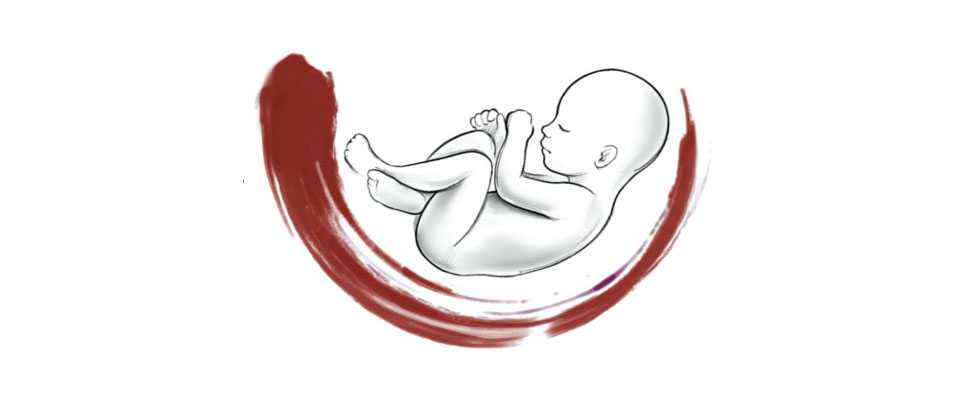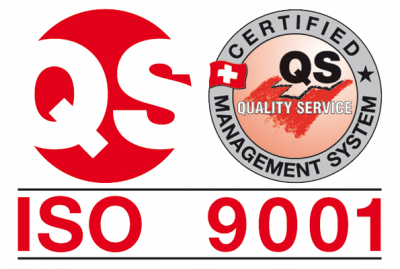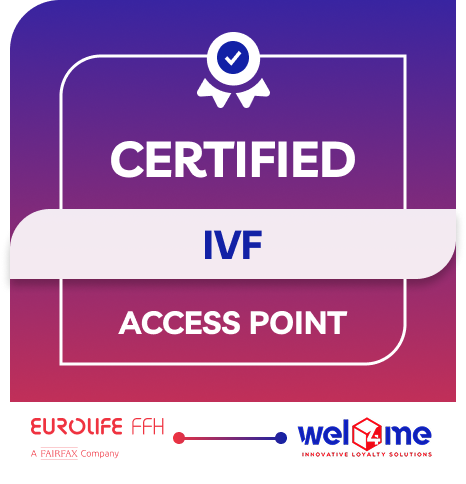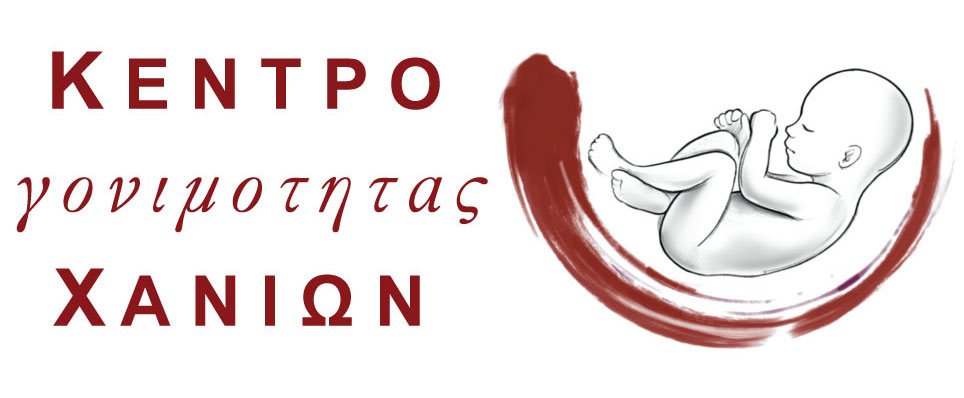
ICSI – Intracytoplasmic sperm injection
ICSI is a fertility treatment in which a single sperm is injected directly into an egg cell. ICSI, which is the abbreviation of Intracytoplasmic sperm injection, delivers high pregnancy rates and is particularly effective in overcoming male infertility issues.
An effective pregnancy may result from ICSI for those who are infertile. To help in conception, Chania Fertility Unit provides the 35 year guarantee of Dr Matthaios Fraidakis and his team who have completed successfully numerous ICSI procedures.
Furthermore, following the latest innovation developments, Chania Fertility Unit use sperm separation devices with which the sperm quality for ICSI becomes significantly better.
What is ICSI
First of all, intracytoplasmic sperm injection is a lab procedure where live sperm is injected into an individual’s eggs. Through this process, an embryo – fertilized egg – may be created. One type of in vitro fertilization (IVF) is called ICSI. ICSI is most frequently used when a man’s infertility interferes with his capacity to become pregnant.
Moreover, ICSI can be also combined with Laser Assisted Hatching – which is presented later on – in order to raise the success rate of the procedure.
What is meant by intracytoplasmic
The term “intracytoplasmic” describes the process of injecting sperm into the cytoplasm of an egg. This is the gel-like material composed of water, salt, and other molecules that are found in the middle of an egg.
What differentiates ICSI from IVF
IVF includes ICSI. When using traditional IVF, a laboratory dish is used to hold thousands of sperm close to an egg. It is up to chance whether a sperm enters the egg and fertilizes it. Conception, sometimes known as fertilization, doesn’t happen if none of the sperm fertilize the egg.
ICSI involves injecting a single sperm directly into an egg to facilitate conception. ICSI does not, however, ensure fertilization.
The doctor implants the fertilized egg (embryo) into your uterus during both ICSI and conventional IVF procedures. If the embryo clings to the lining of your uterus, pregnancy results.
How successful ICSI is
Approximately 60% of ICSI operations involve IVF. It is predicted that fertilization occurs in 50% to 80% of ICSI efforts.
Who are the candidates for ICSI
Male infertility sufferers benefit most from ICSI. ICSI may be suggested by your doctor if a person has:
- Incapacity to ejaculate or anejaculation.
- Οbstruction in the male reproductive system of them.
- Μinimal sperm count.
- Sperm quality is poor.
- Retrograde ejaculation is the process by which semen enters the bladder backward.
ICSI might also be required if:
- Embryos have not been produced by traditional IVF methods.
- The egg supplier is over 35 years old.
- In an attempt to conceive, you are employing cryopreserved eggs or sperm.
Procedure Details
What happens before the procedure
Our medical team needs to gather the sperm and eggs prior to the treatment.
The procedures for retrieving eggs are as follows:
- Ovulation induction (also called ovarian stimulation): For eight to fourteen days, the egg donor gets injections of medicine. Your ovaries are stimulated to mature by producing many eggs at once. Subsequently, an injection of human chorionic gonadotropin (hCG) will aid in the eggs’ final development.
- Egg retrieval: A small needle is inserted into your ovaries via the wall of your vagina with the assistance of our doctors using transvaginal ultrasound technology. There is no pain because this stage is performed under a light anesthetic. The eggs are drawn out and collected by a suction device attached to the needle.
The day of egg retrieval coincides with sperm collection unless frozen sperm is being used. To check the quantity, motility, and quality of the sperm, a semen analysis is done right away. An ejaculation, retrograde ejaculation, or azoospermia may require sperm collection procedures. This also applies to those who have a vasectomy reversal that is unsuccessful. Rather than in a fertility clinic, procedures such as electroejaculation and microscopic testicular sperm extraction may occur in hospitals. Sperm banking is the process of freezing and storing sperm for use in IVF treatments at a clinic later on.
What takes place during ICSI
Throughout the treatment, the doctor:
- Secures the mature egg on a lab dish using a pipette, a tiny glass tube with a suction bulb.
- Using a tiny needle to immobilize and retrieve a single sperm.
- Reaches the cytoplasm by sticking the needle into the egg.
- The sperm is injected into the cytoplasm.
- Removes the needle from inside the egg.
What occurs next
Our fertility specialists will check the fertilized egg in the lab for indications of successful fertilization after ICSI. A properly fertilized egg should divide into cells and form a blastocyst in five to six days. The size and cell mass of the blastocyst will be assessed by your doctor to ascertain when a pregnancy is most likely to result from it.
The fifth or sixth day after the egg retrieval process is when an embryo transfer takes place; more often than not, the transfer is postponed for a month or even longer. Afterwards, we will implant the embryo into your uterus. The embryo has to implant or attach to your uterus in order for pregnancy to occur.
Is there a higher chance of having twins, triplets, or more with ICSI?
Several eggs may be fertilized with ICSI by the doctor to improve your chances of becoming pregnant. It’s possible to wind up expecting twins, triplets, or more if you choose to transfer more than one embryo.
Laser Assisted Hatching in ICSI
What it is
Laser Assisted Hatching is an IVF technique that assists the embryo in hatching and attaching to the uterus, increasing implantation – and therefore pregnancy – rates.
Laser-assisted hatching is a scientific IVF procedure. It creates an opening to facilitate the embryo’s “hatching.” Hatching means breaking through the zona pellucida, the embryo’s outer shell or membrane. In some cases, the freezing and thawing process contributes to a thicker and/or more rigid coating. The easier it is for the embryo to hatch, the better its chances of adhering to or implanting in the uterine wall.
For pregnancy to occur, the embryo must hatch and implant. Laser-assisted hatching can be crucial in achieving these vital stages.
The experienced team of Chania Fertility Unit and their supervisor, Dr. Matthaios Fraidakis, can always help you with any detail you may need regarding the Laser Assisted Hatching procedure, if it’s a good choice for your needs, and any other questions you need to have answered.
Procedure for Treatment
During the procedure, a fertility specialist uses a short, intense light beam. This beam punctures the embryo’s shell under a microscope, allowing the embryo to emerge. This step often occurs during an Intracytoplasmic Sperm Injection (ICSI) cycle. It’s typically done three days after fertilization, when the embryo has started to cleave, or divide. The process is harmless to the embryo and only takes a few seconds. Afterward, the specialist places the embryo back into the patient’s uterus. There, it can adhere to the lining and continue developing.
For whom is assisted hatching advised?
Laser-assisted hatching can benefit any patient, but the following patients are more likely to benefit from it:
- are more over 37 years old
- Generate a lot of Follicle
- FSH stimulation in the beginning of their cycle
- possessed failed IVF cycles
- possess a propensity to generate a zona pellucida that is thicker and/or tougher
Why is laser-assisted hatching done?
Undergoing IVF doesn’t automatically mean you’ll be advised to have laser-assisted hatching. Fertility experts suggest it may help some couples conceive successfully. After reviewing your medical records and reproductive history, your fertility specialist can determine if it’s right for you.
Older women often have eggs with a thick zona pellucida, or outer shell. Similarly, women with high levels of follicle-stimulating hormone (FSH) face this issue. Under these conditions, the egg may not hatch and adhere to the womb. For these reproductive challenges, hatching assistance might be beneficial.
Research shows that a stiff zona pellucida in frozen or thawed embryos complicates hatching and implantation. During laser-assisted hatching, the outer shell splits open. This facilitates straightforward implantation of the embryo.
It’s important to understand that hatching is a natural process. In most IVF cases, embryos successfully implant in the womb. However, failure to hatch is a rare infertility cause, sometimes requiring a modern approach. Discussing the pros and cons of laser-assisted hatching with your reproductive specialist is crucial. Consider the additional cost of this treatment as well.
Benefits of laser-assisted hatching
Due to a number of benefits, laser assisted hatching has been demonstrated to be superior than other methods (chemical and manual).
- minimal embryonic handling
- Quick and precise control over the shell opening drilling
- It doesn’t harm the embryo and is safe and mild.
- Broad patient availability, provided under physician supervision based on your specific situation
Laser-assisted hatching offers more precision compared to earlier assisted hatching techniques. Since the embryo isn’t manually handled in this method, the risk of injury is lower. The laser’s accuracy is predetermined by an algorithm, ensuring the embryo’s safety. Furthermore, hatching rates are higher with laser assistance.




